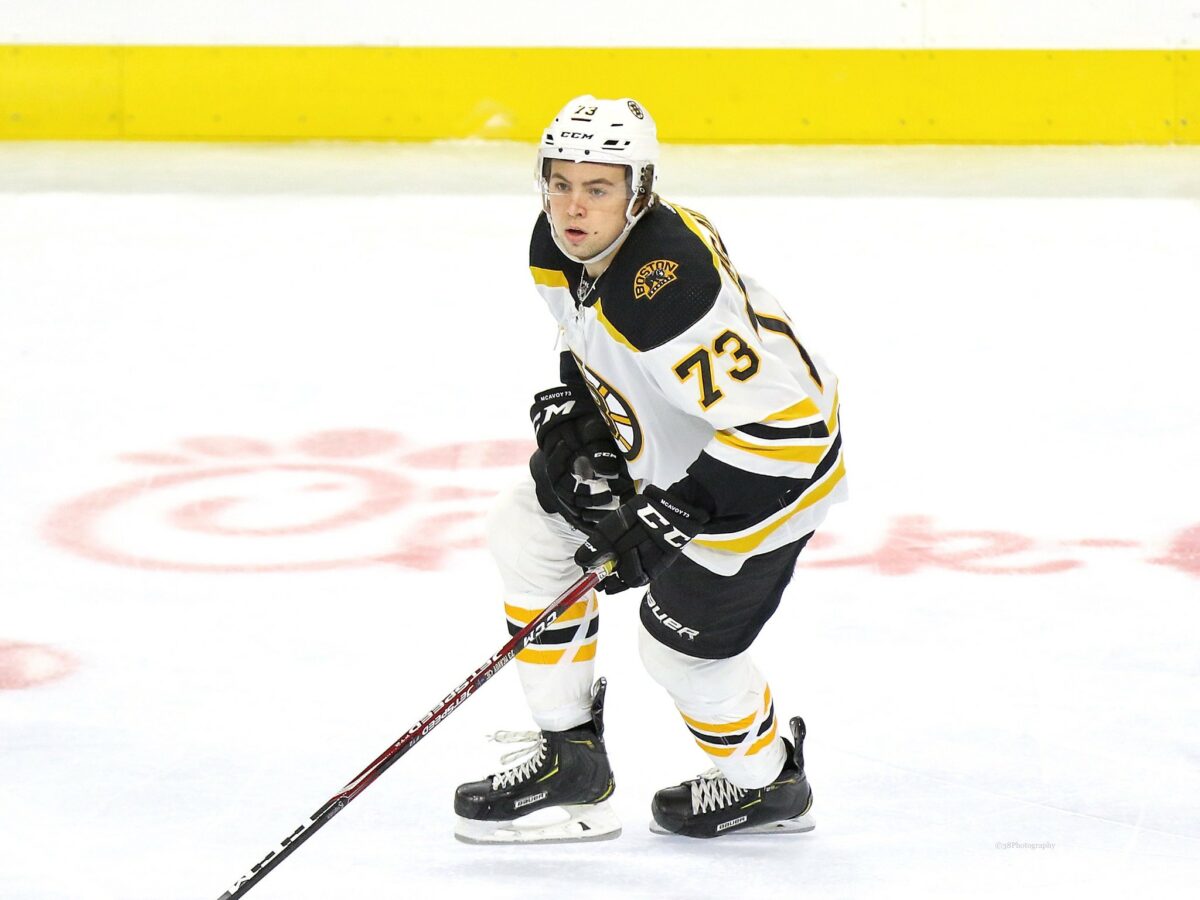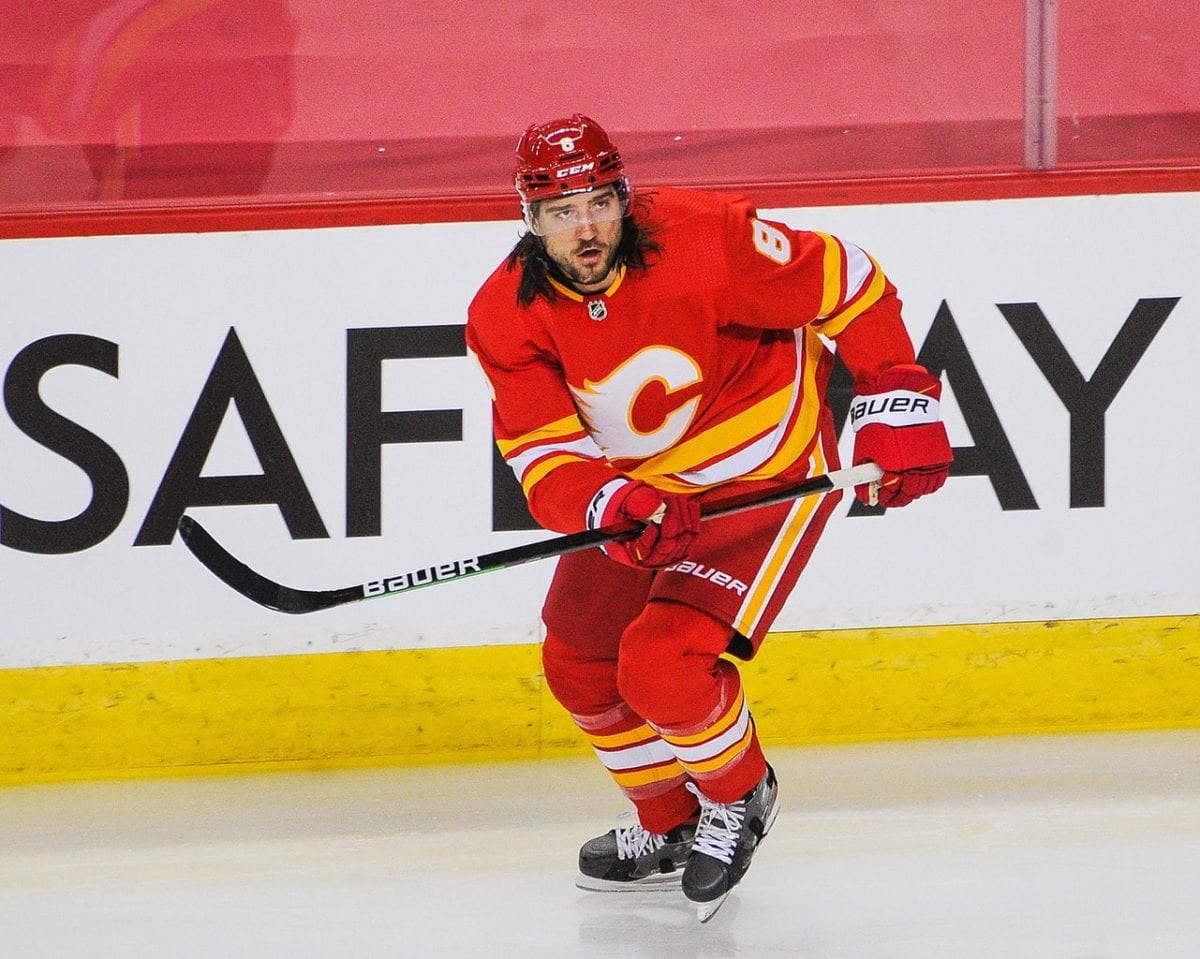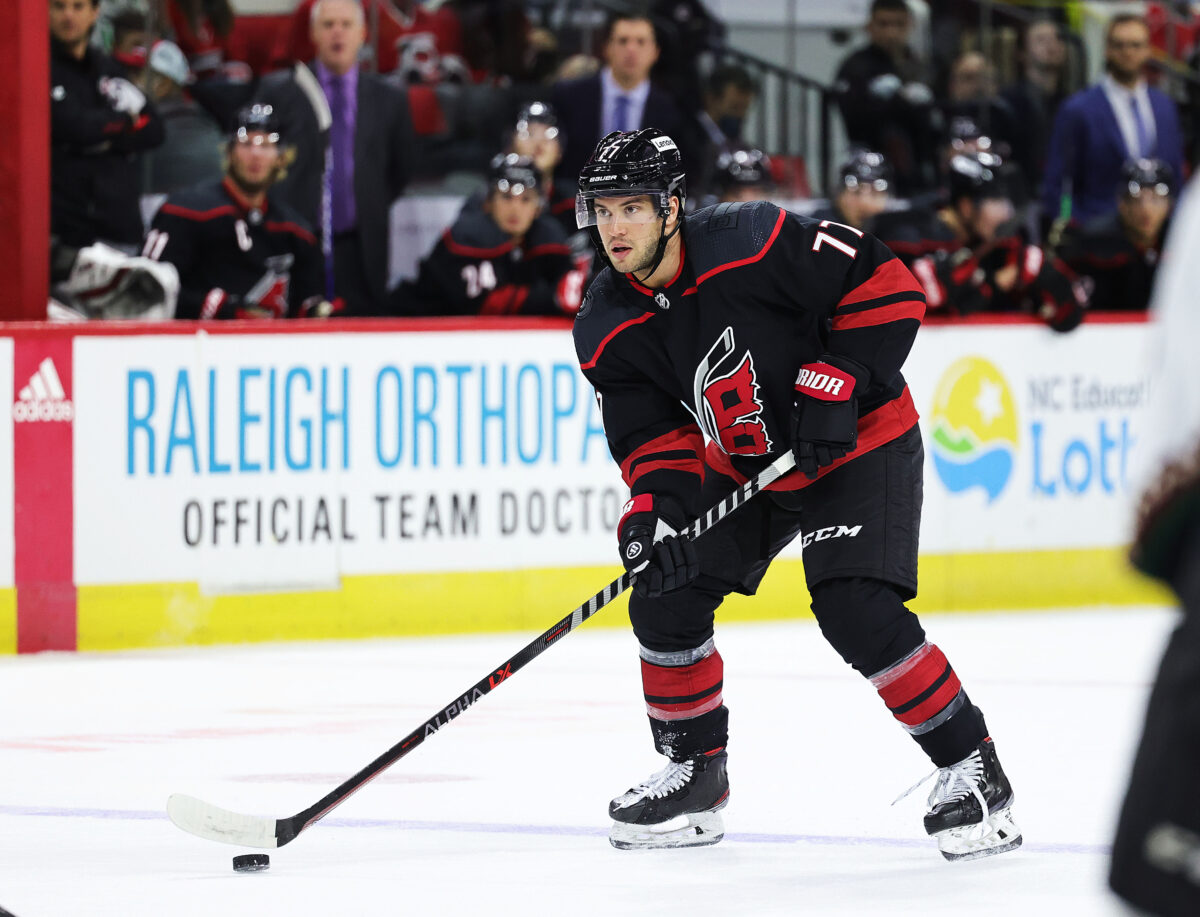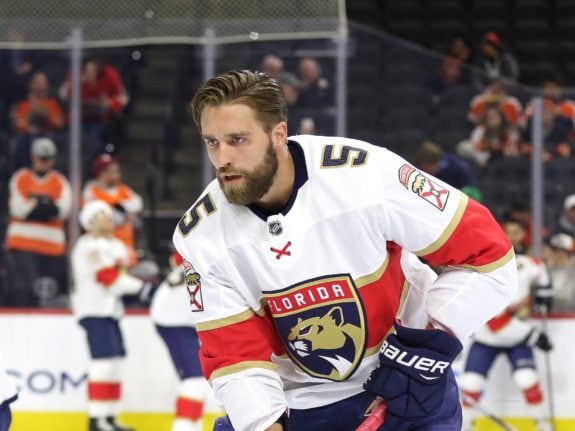This is the second entry in what is to be a four-part series highlighting the best and worst forward lines and defence pairs of the 2021-22 NHL season. The first part, looking at the NHL’s best forward lines, uncovered some familiar names and pinpointed several unheralded contributors.
For the list of the best defence pairs, the only criterion that must be met in order to be featured is that the duo has to have played a minimum of 300 minutes together at 5-on-5. In cases where I had difficulty separating worthy candidates, I chose pairs who are facing more difficult competition or who have played in a greater number of minutes together. It also bears remembering that I place more value on the ability to drive play (i.e. shots and chance quality) rather than whether the pair have conceded a lot of goals against. Goaltending ability is an enormous factor in actual goals allowed, and players should not be overly penalized for that reality. So, without further ado, here are my top defensive pairings for this season.
Boston Bruins: Matt Grzelcyk and Charlie McAvoy
There are few defensemen who get less respect and recognition for their on-ice contributions than Charlie McAvoy of the Boston Bruins. Whether it’s his lack of offensive production or the presence of Boston’s “Perfection Line”, little is made of the shutdown ability of the blossoming defensive superstar. In tandem with partner Matt Grzelcyk, McAvoy shoulders the majority of the Bruins’ zone transition and chance suppression duties while posting pristine results at both ends of the ice.
Among qualified defensive pairs, Boston’s preferred shutdown duo is first in expected goals share (69.6% xGF%) and expected goals against per-60 (1.44 xGA/60), second in expected goals for per-60 (3.31 xGF/60), and claims 72.7% of all goals (GF%) at 5-on-5, the fourth-highest stake in the league. Whether your preferred methods of analysis hail from the traditional cloth or of the modern variety, all of them show that the Bruins’ top pair is overwhelmingly dominant.

Although his box score numbers don’t always bear it out (he’s never eclipsed 32 points in a season), McAvoy is an underrated puck mover and offensive threat. He completes the sixth-highest rate of primary shot assists per-60 (the final pass before a shot is taken), and enters the zone cleanly with possession of the puck more often than any other Bruins blueliner (56.1% of all attempts). He is also their most consistent attacking threat from the backend, leading the team’s contingent in both scoring chances and scoring chance assists per 60 minutes.
Related: 2021-22 Norris Trophy Tracker
While McAvoy is heaped with deserved praise, that shouldn’t take away from Grzelcyk’s significant contributions to the pair’s success. He ranks third on the team in carrying out controlled zone exits and concedes a low rate of zone entries that lead to scoring chances against, successfully keeping opposing forwards to the perimeter.
In conjunction with the aforementioned “Perfection Line”, the McAvoy-Grzelcyk pairing forms one of the NHL’s most dominant five-man units at 5-on-5. In 83 minutes played this season, Boston’s feared quintuple controls 75.9 percent of xGF, 71.4 percent of high-danger chances, and has outscored opponents 7-3 this season. The Bruins stumbled to start the season, but have revved it up recently, winning the second-most games in the league since the start of 2022. If their stars continue to post such strong results, they could be a very tough out come playoff time in a loaded Eastern Conference.
Calgary Flames: Oliver Kylington and Chris Tanev
After the Calgary Flames‘ inability to make the playoffs out of last season’s North Division, the organization teetered on the brink of tearing everything down and selling off its most valuable players for assets in a rebuild. Instead, they’ve doubled down on the robust forechecking strategy espoused by Darryl Sutter and climbed into first place in the Pacific Division with less than half of the regular season left to play.
In truth, I could have chosen either of Calgary’s top two pairings given how similar they’ve been deployed and how much they’ve crushed their respective minutes. Although the pair of Noah Hanifin and Rasmus Andersson has dominated 5-on-5 play (sixth in expected goals share), I decided to go with the duo that has played fewer minutes with the Flames’ top line, Oliver Kylington and Chris Tanev. In 728 minutes together, the pair has controlled 58.3 percent of xGF (sixth among qualified pairs) and has only conceded 1.94 xGA/60 (fifth). The duo also accounts for 65.5 percent of actual goals scored, which ranks them ninth in the league.

The pair’s success is driven by their contrasting, but complementary playing styles. Kylington, who would be in the most improved player debate if such an award existed, is the attacking heartbeat of the pair. Not only does he produce the fewest failed puck retrievals and zone exits per-60 on the team, but he also leads the Flames in the rate at which his retrievals lead to clean transitions out of the defensive zone. He ranks second on the team in terms of his efficiency at entering the offensive zone with possession, only trailing Andersson.
Comparatively, the veteran Tanev acts as the duo’s defensive conscience, giving his offensively-minded partner free reign to move up the ice. He is the team’s most effective zone entry defender (only conceding a clean entry on 47.5 percent of attempts) and is a domineering physical presence, often winning puck battles in the corners.
The two have clearly unlocked the best out of one another, and their visible chemistry is a huge factor in the Flames’ success this season. Both have either posted career-highs in point production (Kylington) or will do so by season’s end (Tanev), and look to propel them to one of their best regular-season finishes ever. By points percentage, the 2021-22 (.667%) edition of the Flames sit second in franchise history behind only the 1988-89 outfit, coincidentally the first and only time the organization has won the Stanley Cup. A good omen, perhaps?
Colorado Avalanche: Devon Toews and Cale Makar
If there is one pair of defensemen who best exemplify the evolving role of NHL blueliners over the past decade, it’s the Colorado Avalanche‘s primary rearguards of Devon Toews and Cale Makar. Without shirking their defensive responsibilities, the pair orchestrates the attack with crisp passing and rover-like movement in the offensive zone. The combination of Makar’s brilliance with the puck and Toews’ underrated two-way presence is a key reason why the Avalanche can continually strike in waves, at times functioning as fourth and fifth forwards in the run of play.
In a slight contradiction to their offensive reputation, the pair is actually one of the best at suppressing scoring chances and goals against, using puck possession to neutralize their opposition. The Avalanche have outscored opponents 31-11 at 5-on-5 with Toews and Makar on the ice and have conceded the third-lowest rate of goals against among qualified pairs. That ratio is not due to strong goaltending behind them, as they’ve controlled the chance quality all year long. They sit third in xGF share (59.1%) and allow the fourth-lowest rate of xGA/60 (1.86) to boot. Now, skeptics might point to Colorado’s offensive superstars as the reason for their dominance, but the pair grades above break-even in every metric without the Avalanche’s attacking triumvirate.

The extent to which the Avalanche’s defensemen get involved in the attack is best illustrated by their rate of shots and shot assists. Toews (second) and Makar (fifth) both rank within the top five of shot assists completed per-60 by blueliners while generating above-average rates of shots on net. Makar is seventh in controlled zone entry percentage (62.1 percent) and ninth in terms of the number of entries that lead to a scoring chance. His skating ability allows him to evade oncoming forecheckers and carry out zone exits at an extraordinary rate (second at 90.6 percent completion with possession).
Related: 3 Teams Under Most Pressure at 2022 NHL Trade Deadline
Surprisingly, Toews leads all Avalanche defenders in high-danger shot assists per-60, picking his spots wisely. While he doesn’t possess the same physical gifts as his more offensively gifted counterpart, he’s able to wriggle into dangerous scoring areas to put additional pressure on defences. His 4.43 scoring chances per-60 rank 10th among blueliners according to Corey Sznajder’s tracking data, which puts him within striking distance of some of the NHL’s most dynamic rearguards.
If it seems as though I haven’t touched on normally mentioned defensive aspects, it’s for good reason. This pairing emphasizes puck possession and a relentless attack to keep the puck away from their net. The less often the other team has the puck, the fewer opportunities they will have to score. It’s a contradictory way to think about what represents good defensive play, but its effectiveness is borne out in the numbers.
Carolina Hurricanes: Jaccob Slavin and Tony DeAngelo
Given how Tony DeAngelo’s tenure ended with the New York Rangers, many were right to question whether he could put his off-ice troubles behind him and deliver as the Carolina Hurricanes‘ replacement for Dougie Hamilton. Fortunately for them, DeAngelo and partner Jaccob Slavin have formed one of the league’s most formidable pairings at both ends of the ice. Their collective ability to drive offence and stymie opposing attacks has vaulted the Hurricanes into legitimate Stanley Cup contention, sitting second to only the Avalanche in terms of points percentage this season.
In just under 400 minutes spent together at 5-on-5, the duo is 11th in xGF% (56.1 percent) and generates the most potent rate of expected goals for per-60 (3.37 xGF/60) among qualified pairs. They also sit seventh in their share of actual goals (66.7 percent) and the Hurricanes have scored the third-most goals per-60 (4.21) with the two sharing the ice.
Carolina’s run-and-gun style suits the pair as Slavin – long one of the NHL’s most underrated defensemen – is five points away from matching his previous career-high and has continued to submit impenetrable defensive results at even strength. Additionally, DeAngelo leads the team with 40 points in 43 games and tops the defensive leaderboards in terms of points per-60-minutes at both 5-on-5 and in all situations.

The former Ranger is 11th leaguewide in primary shot assists and leads Hurricane blueliners in controlled zone entries (with possession) per-60, driving the club’s transition play. While neither player is adept at preventing zone entries against, Slavin excels at retrieving the puck in the defensive zone and moving it out of danger. He’s not the most physical defender but is adept at breaking up opponents’ attacking schemes, ranking eighth in total takeaways completed at 5-on-5 with 32.
The issue with DeAngelo was never his production, as his near point-per-game pace this season mimics the 53 points he put up in 68 games for the Rangers in 2019-20. Rather, much of the consternation with the 26-year-old was that whatever positive impact he brought offensively, he was giving it all right back at the defensive end. It appears as though he’s improved in that department, with his xGA/60 rate dropping from his 2019-20 campaign (he only played six games last season), and he’s posted the strongest xGF% mark of his career (53 percent).
Unfortunately, DeAngelo recently suffered an injury that looks to sideline him for a month, halting the momentum of his on-ice turnaround. The Hurricanes boast enough depth to be able to weather his absence, but they’re obviously much stronger with him in the lineup lining up beside the ever-dependable Slavin.
Florida Panthers: MacKenzie Weegar and Aaron Ekblad
For the first time in the franchise’s turbulent history, the Florida Panthers are Stanley Cup frontrunners, using an electric offence to overwhelm opponents on a nightly basis, leading the league with 4.02 goals per-60 in all situations. The Panthers’ prolific scoring coupled with their top defensive duo of the underrated MacKenzie Weegar and Norris Trophy candidate Aaron Ekblad makes them tricky to counter at both ends.
After struggling to hit the heights expected of him as the first-overall pick from 2014, Ekblad has taken a decisive step in his development. He’s already produced career highs in assists (35) and points (49) through 52 games and is on pace for the first 20-goal season of his eight-year NHL career. The hulking 6-foot-4 blueliner leads the Panthers in individual scoring chances and scoring chance assists per-60, driving the bus on offense. If NHL players were allowed to go to the Beijing Olympics, Ekblad likely lines up for Canada – that’s how good he’s been this season.

Weegar, an unheralded seventh-round pick from 2013, has morphed into one of the league’s most dependable two-way forces on the Panthers’ blueline. He leads all NHL defensemen in takeaways at 5-on-5 (49), and his 32 points in 53 games this season are creeping up on the career-best he established last season (36 points). Apart from Gustav Forsling, no other Florida defenseman completes controlled zone entries at a higher rate than Weegar. He is by far the team’s best puck mover, retrieving pucks in the defensive zone and facilitating clean zone exits at the highest rate on the team.
Despite the team’s emphasis on firewagon hockey, their top pairing does not concede many chances. Both Ekblad and Weegar hold the blue line well, conceding below-average rates of zone entries and entries leading to chances against. All those contributing factors lead to a 58.1 percent share of xGF, the seventh-highest mark among qualified pairs. While ranking 30th out of 67 pairs in xGA/60 and 39th in GA/60 due to their high-event style of play, the duo reasserts dominance in attack, creating the third-most xGF/60, and seventh-most GF/60, constantly pushing the tempo.
Related: 3 Players Panthers Fans Have Fallen in Love with This Season
The Panthers are currently one of the favourites to emerge from the Eastern Conference playoff bracket on the back of their fluid defence core and high-flying forward group. Ekblad and Weegar are the offensive and defensive fulcrums of this Stanley Cup contender, and their elevated play this season is driving their championship aspirations.
NHL Boasts Many Dominant Defence Pairs
Along with the five pairings I believe to have been the most effective this season, I’ve included an additional five duos as honourable mentions below. Still, there are sure to be deserving candidates left unrecognized, so let me know if there are any other pairs worthy of praise in the comments. Stay tuned for the next article in this series, which will identify the NHL’s worst forward lines this season.
Honourable Mentions: Noah Hanifin and Rasmus Andersson (Calgary Flames); Miro Heiskanen and Ryan Suter, (Dallas Stars); Mikey Anderson and Drew Doughty (Los Angeles Kings); Adam Pelech and Scott Mayfield (New York Islanders); Victor Hedman and Jan Rutta (Tampa Bay Lightning).
Data courtesy of All Three Zones, Hockey Reference, MoneyPuck, and Natural Stat Trick. Statistics are accurate as of February 27, 2021.